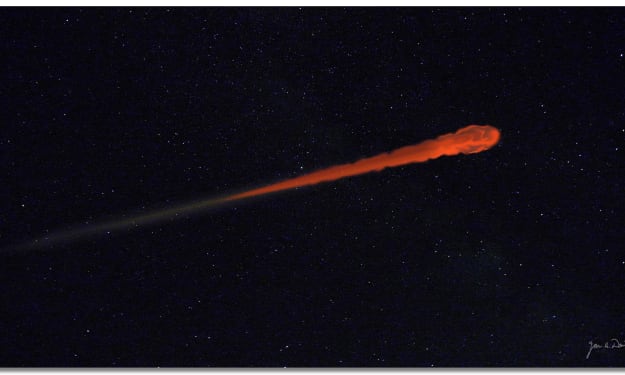If The Sun Disappear, Why We Notice After 8 Minutes?
We see the Moon 1.25 seconds ago and Alpha Centauri, the nearest star system, 4.25 years ago
Wouldn’t it be interesting to watch the past? For example, watching an event that happened 10,000 years ago live as if it were happening right now.
In fact, we experience this every day.
How? The farther we look out in the universe, the farther back in time we go.
We see the Moon 1.25 seconds ago, the Sun 8.5 minutes ago, and Alpha Centauri, the nearest star system, 4.25 years ago.
It is literally impossible to know what the universe looks like right now.
It is reasonable to believe that the Moon, the Sun and the nearest star system are still in place. But this is not true for galaxies whose images only reach us from billions of years ago. The time it takes for light from objects in space to reach Earth means that when we look at planets, stars and galaxies, we are actually looking back in time.
Let’s take a simple example.
The speed of light in space is approximately 300 million meters per second. Let’s say we are standing 600 million meters away from a light source. We have a friend standing next to the light source.
When our friend presses a button, light is emitted. This light takes about 2 seconds to reach us. In this case, we will know that our friend turned on the light after 2 seconds.
In fact, when we turn on a flashlight, it is not simultaneous for photons to be generated, for them to reach our eyes and for us to see them. But we don’t feel this difference because it is in nanoseconds.
Now apply this to events in galaxies 10,000 light years away from us. For example, we will not see a starburst at this distance until 10,000 years after it happens.
Since we don’t watch the stars in deep space every day, and we don’t have a friend 600 million meters away from us to turn on and off the lights, how do we experience this phenomenon?
If our sun were to disappear, we would only realize it after 8 minutes.
The Sun, the 4.5 billion-year-old star of the system to which the Earth belongs, is about 150 million kilometres away from us.
The speed of light is about 300 thousand kilometres per second. In this case, a ray of light leaving the surface of the Sun takes about 8 minutes and 20 seconds to reach us.
Considering that the Earth moves in an elliptical orbit around the Sun, this time varies between 490 seconds and 507 seconds. But 500 seconds is the average.
If 8 minutes is not interesting enough for you, think of it this way: A photon actually has a life before it reaches the surface of the Sun, floats through space and reaches our eyes.
You know that the Sun produces photons in its core through fusion reactions. A photon produced by gamma radiation manages to reach the surface after a very long time after travelling through the core and the radioactive region.
So a photon from the Sun that reaches our eyes could actually be tens of thousands of years old!
The distance between us and the Sun and the limited speed of light has other consequences, of course.
For example, imagine that for some reason, our rare source of life suddenly disappears.
At that moment, depending on the distance between the Sun and our Earth, we will continue to live on our planet for about 8 minutes as if nothing had happened. A wonderful 8 minutes in which we are oblivious to what will happen to us afterwards.
How does looking at distant galaxies allow us to look back in time?
When telescopes look at light from distant galaxies, they are not literally looking back in time. The past no longer exists, so no one can look at it directly. Instead, telescopes look at the present-time pattern of a beam of light.
Because the beam of light has been travelling through mostly empty space for millions of years, it is largely undistorted.
Therefore, the present-time pattern of this beam of light is the same pattern it had millions of years ago when it was first created by the distant galaxy.
By looking at the current state of a beam of light, we can infer what the galaxy that created the light looked like millions of years ago.
Conclusion
This means that when we point our telescopes into space, we can see what it was like in earlier times, even if we can’t see it now.
This allows astronomers to see the entire evolution of the universe since the Big Bang.
We are actually experiencing this phenomenon every moment. So no matter how hard we try, we will not be able to prevent our perception and knowledge from lagging behind what is happening in the universe.
That’s fine. Still, late knowledge is better than no knowledge!
The original version of this article was published on another platform.
You may follow me there or If you enjoy writing and storytelling, you can join Medium, Vocal as a creator to earn money and find your voice and reach out to a broad audience.
About the Creator
Gokhan Yalcuk
I write and support writers | For more: gokhanyalcuk.com







Comments
There are no comments for this story
Be the first to respond and start the conversation.